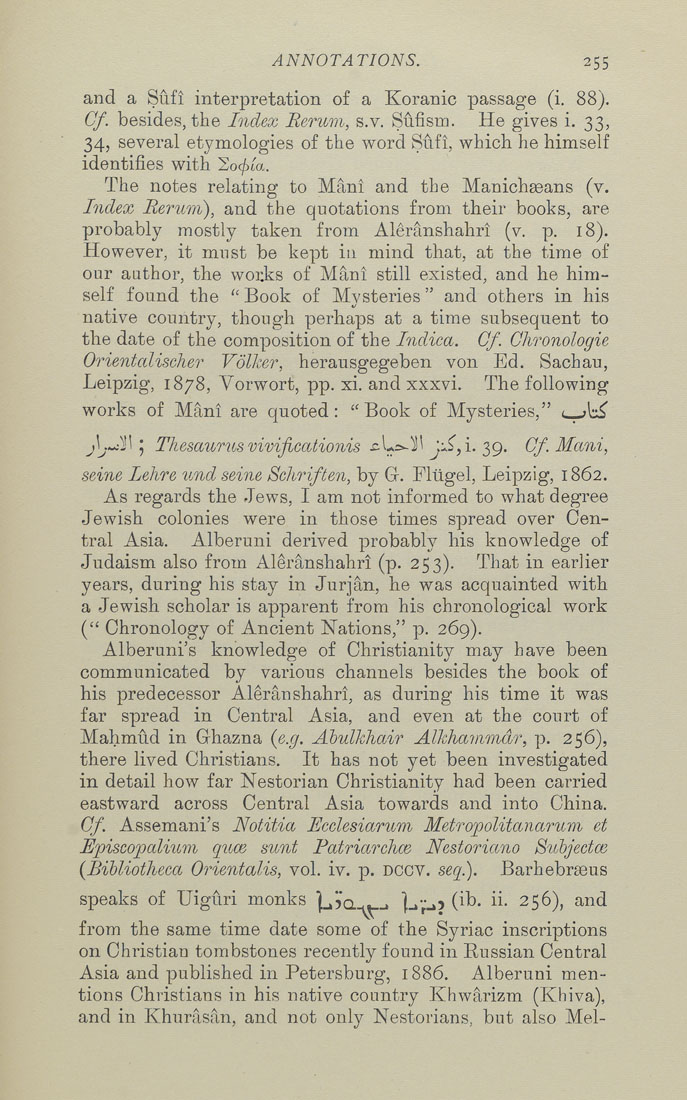ANNOTATIONS. 255
and a Siifi interpretation of a Koranic passage (i. 88).
Cf. besides, the Index Rerum, s.v. Sufism. He gives i. 33,
34, several etymologies of the word Siifi, which he himself
identifies with 2o<^ta.
The notes relating to Mani and the Manichseans (v.
Index Rerum), and the quotations from their books, are
probably mostly taken from Aleranshahri (v. p. 18).
However, it must be kept iu mind that, at the time of
our author, the woi:ks of Mani still existed, and he him¬
self found the "Book of Mysteries" and others in his
native country, though perhaps at a time subsequent to
the date of the composition of the Indica. Gf. Ghronologic
Orientalischer Volker, herausgegeben von Ed. Sachau,
Leipzig, 1878, Vorwort, pp. xi. and xxxvi. The following
works of Man! are quoted: "Book of Mysteries," i__i\:^
^K-j^n • Thesaurus vivificettionis si\^=^'i\ j-J,i. 2,g. Gf.Mctni,
seine lehre und seine Schriften, by G. Fliigel, Leipzig, 1862.
As regards the Jews, I am not informed to what degree
Jewish colonies were in those times spread over Cen¬
tral Asia. Alberuni derived probably his knowledge of
Judaism also from Aleranshahri (p. 253). That in earlier
years, during his stay in Jurjan, he was acquainted with
a Jewish scholar is apparent from his chronological work
(" Chronology of Ancient Nations," p. 269).
Alberuni's knowledge of Christianity may have been
communicated by various channels besides the book of
his predecessor Aleranshahri, as during his time it was
far spread in Central Asia, and even at the court of
Mahmud in Ghazna (e.g. Abulkhair Alkhetmmetr, p. 256),
there lived Christians. It has not yet been investigated
in detail how far Nestorian Christianity had been carried
eastward across Central Asia towards and into China.
Gf. Assemani's Notitia Ecclesiarum Metropolitctnctruni et
Fpiscopaliitm qucB sunt Patriarchce Nestorietno Subjectce
(Bibliotheca Orientalis, vol. iv. p. DCCV. seq.). Barhebrseus
speaks of Uiguri monks LVa . _, L"_,5 (ib. ii. 256), and
from the same time date some of the Syriac inscriptions
on Christian tombstones recently found in Russian Central
Asia and published in Petersburg, 1886. Alberuni men¬
tions Christians in his native country Khwarizm (Khiva),
and in Khurasan, and not only Nestorians, but also Mel-
|








